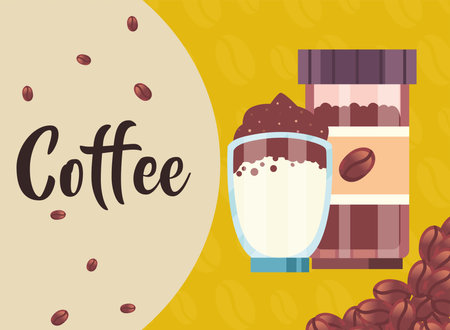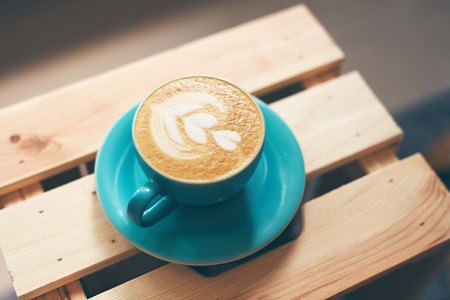Introduction to Coffee Roast Levels
When it comes to enjoying a great cup of coffee in the United States, one of the most important factors that shapes your experience is the roast level. Whether youre grabbing a quick cup at your favorite local café or brewing at home, understanding roast levels can open up a whole new world of flavor and aroma. Coffee roast levels refer to how long and at what temperature coffee beans are roasted, ranging from light to dark. Each level brings out different characteristics in the beans, impacting everything from brightness and acidity to body and sweetness. For American coffee drinkers and enthusiasts alike, knowing about roast levels not only helps you find your preferred taste but also enhances your appreciation for the diversity that coffee has to offer.
2. Understanding the Roast Spectrum
When exploring how roast levels impact coffee flavor and aroma, it’s essential to understand the main types of roasts: light, medium, and dark. Each roast has distinct characteristics, not only in color and texture but also in the flavors they bring to your cup. In the U.S., these differences influence both consumer preferences and market trends.
| Roast Level | Color | Texture | Flavor Profile | U.S. Market Trend |
|---|---|---|---|---|
| Light Roast | Light brown | Dry surface | Bright, acidic, highlights origin flavors | Increasingly popular among specialty coffee drinkers |
| Medium Roast | Medium brown | Smooth, non-oily surface | Balanced acidity and body, sweeter notes | The most common choice in American households and cafes |
| Dark Roast | Dark brown to almost black | Oily surface | Bitter, smoky, low acidity, robust body | Classic for traditional American brews like diner coffee and espresso blends |
The color of the beans is a quick visual cue: light roasts are tan or cinnamon-hued, medium roasts look richer brown, and dark roasts appear nearly black with a shiny finish due to released oils. The texture shifts from dry (light) to oily (dark) as roasting time increases. On the flavor spectrum, light roasts preserve the beans original qualities and acidity; medium roasts balance these with caramelization sweetness; while dark roasts develop bold, bittersweet flavors at the expense of subtle origin notes.
Culturally, Americans have historically leaned toward darker roasts—think classic drip coffee—but recent years have seen a surge in demand for lighter and more complex profiles driven by third-wave coffee shops and adventurous home brewers. Understanding these key differences helps you choose a roast that matches your taste preferences and keeps you in step with current U.S. coffee trends.

3. How Roasting Alters Coffee Flavor Profiles
Roasting coffee is both an art and a science, transforming raw green beans into the flavorful brews Americans love. During roasting, beans undergo a series of complex chemical reactions that dramatically change their taste and aroma. The most significant of these changes involve the Maillard reaction and caramelization, which develop the characteristic flavors and brown color of roasted coffee. As heat is applied, acids break down, sugars caramelize, and hundreds of aromatic compounds form—each contributing unique notes to your cup.
The degree to which a coffee bean is roasted plays a crucial role in shaping its flavor profile. Lighter roasts preserve more of the bean’s original acidity and delicate floral or fruity notes, appealing to those who enjoy a bright, tangy cup. As the roast gets darker, acidity decreases while sweetness and body increase, resulting in deeper flavors like chocolate, nuts, or even smoky undertones. This shift happens because prolonged roasting causes more sugar caramelization and further breakdown of acids within the beans.
Sensory-wise, these scientific changes mean that a light roast might highlight citrus or berry notes with a crisp finish, while medium roasts often strike a balance between lively acidity and satisfying sweetness. Dark roasts tend to emphasize boldness and bitterness, with subdued acidity but rich flavors reminiscent of toasted bread or dark cocoa. Understanding how roasting transforms coffee at both a molecular and sensory level can help you choose the roast profile that best matches your flavor preferences.
4. Roast Level and Aroma: What to Expect
When it comes to coffee, aroma plays a huge role in the overall experience. The scent of freshly brewed coffee can set the tone for your morning or give you that midday pick-me-up. In America, where coffee culture thrives from coast to coast, the way your brew smells is just as important as how it tastes. Roast levels are a major factor in shaping these aromatic qualities, and understanding them helps you pick a coffee that truly fits your vibe.
Lighter roasts often carry floral, fruity, or even citrusy notes in their aroma—think of walking into a local café and catching hints of berries or jasmine wafting from your cup. These lighter scents appeal to those who enjoy complex, delicate coffees often found in third-wave coffee shops across cities like Portland or San Francisco.
On the other hand, medium roasts tend to have a sweeter, toastier aroma with nutty and caramel undertones. It’s the classic “coffee smell” that many Americans associate with their morning routine—familiar and comforting, reminiscent of grabbing a fresh cup at a neighborhood diner or brewing at home before work.
Dark roasts bring out bold aromas like chocolate, spice, or even smoky notes. Picture the rich scent filling the air at an old-school New York deli or the deep, robust aroma from a French press at home on a chilly morning. These powerful smells often appeal to those who prefer strong flavors and traditional coffeehouse vibes.
| Roast Level | Common Aromas | American Experience |
|---|---|---|
| Light | Floral, Fruity, Citrus | Trendy specialty cafés; adventurous sippers |
| Medium | Nutty, Caramel, Toasty | Classic diner brews; everyday comfort |
| Dark | Chocolatey, Spicy, Smoky | Old-school delis; strong morning rituals |
No matter which roast you lean towards, understanding how each level impacts aroma lets you choose a cup that matches your mood—and brings back memories of your favorite American coffee moments.
5. Regional Preferences: American Coffee Culture
When it comes to coffee in the United States, regional preferences for roast levels are as diverse as the country itself. Across different parts of the U.S., people have developed distinct tastes that influence how coffee is roasted and enjoyed, reflecting both local traditions and broader cultural trends.
West Coast: The Rise of Light Roasts
The West Coast, especially cities like Seattle, Portland, and San Francisco, is known for embracing lighter roasts. This preference has been fueled by the third-wave coffee movement, which emphasizes the unique flavors and origins of coffee beans. Lighter roasts preserve more of the bean’s natural characteristics, offering vibrant acidity, floral notes, and fruity undertones. West Coast coffee drinkers often seek out single-origin coffees and artisanal roasters who highlight subtle flavors that would be lost in darker roasting. This approach aligns with a broader cultural appreciation for craft beverages and culinary experimentation found throughout the region.
East Coast: Tradition of Dark Roasts
On the East Coast, particularly in cities like New York and Boston, dark roasts remain a staple. The preference here leans towards bold, robust coffees with deep chocolatey or smoky notes—flavors brought out by longer roasting times. Historically, dark roasts were seen as a sign of quality and strength, aligning with the fast-paced lifestyle and no-nonsense attitudes often associated with East Coast culture. Many classic diners and established coffee houses serve these richer brews, reflecting a tradition that values consistency and heartiness over experimentation.
Cultural Influences Behind These Trends
The reasons behind these regional preferences go beyond taste alone. On the West Coast, the culture values innovation and transparency about sourcing—leading to an emphasis on lighter roasts that showcase origin flavors. Meanwhile, the East Coast’s love for darker roasts mirrors its appreciation for time-honored routines and straightforward flavors. Additionally, immigrant communities in each region have influenced local coffee traditions—Italian espresso bars on the East Coast favoring darker profiles, while Scandinavian settlers in the Pacific Northwest popularized lighter brews.
What It Means for Coffee Lovers
Understanding these regional differences can help you choose a roast level that matches your flavor preferences or inspire you to try something new from another part of the country. Whether you prefer a bright West Coast pour-over or a strong East Coast cup of joe, exploring how roast levels shape flavor is an essential part of American coffee culture.
6. Choosing the Right Roast for Your Taste
When it comes to picking the perfect coffee roast, personal taste is everything—especially in the diverse and dynamic American coffee scene. To find your ideal roast level, start by considering what you enjoy most about your coffee experience. If you love bright, lively flavors with a tangy acidity and floral or fruity notes, light roasts might be your go-to. These are popular among those who appreciate specialty coffees and want to taste the unique characteristics of different origins.
If you prefer a balanced cup with moderate acidity, subtle sweetness, and a richer aroma, medium roasts could be your best match. This style is a staple at many American cafes and works well for both black coffee drinkers and those who like adding milk or cream. Medium roasts offer a familiar, approachable flavor that appeals to a broad range of palates.
For fans of bold, robust flavors with low acidity and pronounced notes of chocolate or caramel, dark roasts may hit the spot. They’re especially beloved in many classic American diner settings and are often featured in espresso drinks. Keep in mind that dark roasts can sometimes mask subtle origin flavors but deliver consistency and depth that many consumers love.
Think about how you usually prepare your coffee as well—certain roast levels shine brighter in specific brewing methods. For example, pour-over methods enhance the nuances of light and medium roasts, while espresso machines or French presses often complement darker profiles.
Don’t hesitate to ask for samples or recommendations at local coffee shops, and remember that experimenting with different roast levels is part of the fun. Over time, your preferences might evolve as you discover new beans and brewing techniques. Ultimately, selecting the right roast is all about enjoying your daily cup just the way you like it—so trust your taste buds and explore what America’s vibrant coffee culture has to offer.

